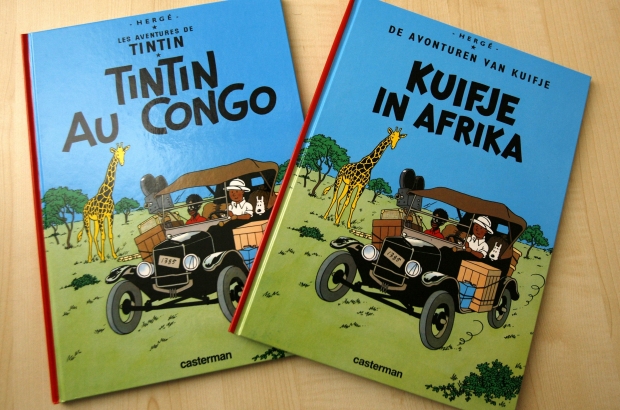- Daily & Weekly newsletters
- Buy & download The Bulletin
- Comment on our articles
Tintin in the Congo republished with colonial context
A reissue of the comic Tintin in the Congo has been published with a new preface that puts the cartoon into context.
The new issue was discreetly released last month and sold for €59 as part of a boxed set called Les colorisés, RTBF reports, a collection which also includes Tintin in the Land of the Soviets and Tintin in America.
The new version has a completely different cover: the original featured a young black child sitting beside Tintin in a Jeep and the new one shows Tintin and a lion locked in a stare-down.
“Hergé merely relayed the colonialist prejudices that prevailed in European public opinion in 1930, at a time when racial hierarchy and paternalism were deeply rooted in European society,” the new preface said.
Such added context has been called for since 2007 by France's Conseil représentatif des associations noires (CRAN), but the final version has been the subject of some criticism, with people suggesting that a Congolese academic should have helped write it rather than only Philippe Goddin, a Belgian literary critic specialising in the life and work of Hergé and also president of the association Les amis d'Hergé.
According to Geneviève Kaninda of CMLCD, the Colonial Memory and Fight against Discrimination Collective, while the aim of the preface was to warn the reader, that objective has not been met.
“We have a preface of aroundn15 pages which justifies Hergé's work,” Kaninda said.
“The images in this comic book come from colonial archives. But here we have images that are also stereotyped and racist. And we don't find that in the preface.
"Here, we say that it's simply a caricature, that blacks and whites are caricatured and that, in the end, Hergé was in no way racist, he was simply a product of his time.”
Kaninda argues that in the current preface, “the very context of colonisation, in other words the system and the violence it produced, is not called into question".
She added: "The colonial propaganda is not called into question, nor the way in which the comic strip Tintin in the Congo is also part of this colonial propaganda.
"At no point in the preface is this questioned. Worse still, there are even moments when the author of the preface himself recycles colonial propaganda arguments, even in the way he expresses himself, which is extremely problematic.”
But some Tintin fans have reacted positively to the added preface. Dominique Maricq told RTBF that it allows readers to “revisit the work in a different way” and that author Hergé lacked exposure to other cultures at the time of the comic’s creation.
“[Hergé] was someone who was not very cultured to begin with, but very open to others, but under influence,” Maricq said.
“He gradually gained his freedom, including from his mentor, Abbé Wallez, and he developed a career in which he met a huge number of educated people with degrees, who had all kinds of knowledge and who opened his eyes. But he didn't have any contact with black people at the time.”
Photo: A previous edition of Tintin in the Congo, Sebastien Pirlet/Belga



















